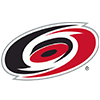We're firmly in the dog days of summer. The excitement of September callups (which isn't what it used to be now that rosters only expand to 28, not 40) is still more than a week away. The potentially thrilling conclusions to the league's various playoff races won't be here for a few more weeks after that. These games of course matter as much as any others, but I won't pretend that we're in the most exciting part of the schedule.
If you're still here reading baseball articles despite the fact that fantasy football draft season is firmly underway, congratulations on still being competitive in your league. If you're still here despite the fact that you're already out of the race for this season, I appreciate your readership just as much. I'll try to highlight players I anticipate being particularly interested in next year down the stretch, helping you prepare for 2023 drafts seven months early.
We're late enough into the season that it's become much more useful to divide the season up into smaller parts and focus on just what a player has done lately. While it's generally always wise not to eliminate any data when trying to analyze a player, it's also the case that players' talent levels do meaningfully change throughout the year, either due to development or due to better or worse health.
That's a useful fact to keep in mind if you're a contending team looking to scrape every last bit of value out of your
We're firmly in the dog days of summer. The excitement of September callups (which isn't what it used to be now that rosters only expand to 28, not 40) is still more than a week away. The potentially thrilling conclusions to the league's various playoff races won't be here for a few more weeks after that. These games of course matter as much as any others, but I won't pretend that we're in the most exciting part of the schedule.
If you're still here reading baseball articles despite the fact that fantasy football draft season is firmly underway, congratulations on still being competitive in your league. If you're still here despite the fact that you're already out of the race for this season, I appreciate your readership just as much. I'll try to highlight players I anticipate being particularly interested in next year down the stretch, helping you prepare for 2023 drafts seven months early.
We're late enough into the season that it's become much more useful to divide the season up into smaller parts and focus on just what a player has done lately. While it's generally always wise not to eliminate any data when trying to analyze a player, it's also the case that players' talent levels do meaningfully change throughout the year, either due to development or due to better or worse health.
That's a useful fact to keep in mind if you're a contending team looking to scrape every last bit of value out of your roster over the final month-plus of the year, but it's arguably even more useful for noncontending teams in dynasty leagues. If you can spot a player whose overall numbers make him look fringy at best but whose performance over the course of the year shows a clear upward trend, you may be able to sneak in a legitimate contributor for next year's roster for just a dollar or two on the waiver wire or as a throw-in in a trade. Players who fit into that category make up much of this week's Risers.
RISERS
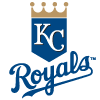 Vinnie Pasquantino, 1B, Royals: Excellent contact skills with at least enough power was the scouting report on Pasquantino when he arrived in the majors in late June, though he didn't fully live up to the hype right away, slashing a modest .214/.308/.325 with three homers in his first 32 games. Even that unimpressive stretch contained plenty of promise, however, as he struck out just 16.5 percent of the time while posting a strong 10.5 percent barrel rate. In his last 16 games, that promise has turned into production, as he's hit .368/.431/.667 with five homers and more walks (7) than strikeouts (5). He now owns an incredible combination of a 13.6 percent strikeout rate and a 10.8 percent barrel rate through his first 198 MLB plate appearances, showcasing a blend of contact and power that you rarely see. The only other hitter who's come to the plate even 15 times this season while posting a strikeout rate below 15 percent and a barrel rate above 10 percent is Juan Soto.
Vinnie Pasquantino, 1B, Royals: Excellent contact skills with at least enough power was the scouting report on Pasquantino when he arrived in the majors in late June, though he didn't fully live up to the hype right away, slashing a modest .214/.308/.325 with three homers in his first 32 games. Even that unimpressive stretch contained plenty of promise, however, as he struck out just 16.5 percent of the time while posting a strong 10.5 percent barrel rate. In his last 16 games, that promise has turned into production, as he's hit .368/.431/.667 with five homers and more walks (7) than strikeouts (5). He now owns an incredible combination of a 13.6 percent strikeout rate and a 10.8 percent barrel rate through his first 198 MLB plate appearances, showcasing a blend of contact and power that you rarely see. The only other hitter who's come to the plate even 15 times this season while posting a strikeout rate below 15 percent and a barrel rate above 10 percent is Juan Soto.
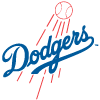 Max Muncy, 1B/2B/3B, Dodgers: Exactly when Muncy was supposed to be drafted was the subject of much debate over the past offseason. There weren't any questions about his talent, but there were plenty of questions about his health, as he missed last year's playoffs after injuring his elbow in the regular-season finale. After stating in an interview in early March that he intended to be ready by Opening Day, he became a lot more interesting, but while he did in fact make the Opening Day roster, his performance throughout much of the year suggested that those who avoided him made the right call. Through the end of July, he was hitting just .161/.310/.303. He's suddenly looked like vintage Max Muncy in August, however, slashing .328/ .409/.776. His strikeout rate has actually jumped up to 27.3 percent, but he's more than made up for it with an incredible 25.0 percent barrel rate. Muncy's slow start means those who took a chance on him probably won't get their money's worth, but now that the injury is further in the rearview mirror, there's reason to expect he'll live up to expectations from here on out.
Max Muncy, 1B/2B/3B, Dodgers: Exactly when Muncy was supposed to be drafted was the subject of much debate over the past offseason. There weren't any questions about his talent, but there were plenty of questions about his health, as he missed last year's playoffs after injuring his elbow in the regular-season finale. After stating in an interview in early March that he intended to be ready by Opening Day, he became a lot more interesting, but while he did in fact make the Opening Day roster, his performance throughout much of the year suggested that those who avoided him made the right call. Through the end of July, he was hitting just .161/.310/.303. He's suddenly looked like vintage Max Muncy in August, however, slashing .328/ .409/.776. His strikeout rate has actually jumped up to 27.3 percent, but he's more than made up for it with an incredible 25.0 percent barrel rate. Muncy's slow start means those who took a chance on him probably won't get their money's worth, but now that the injury is further in the rearview mirror, there's reason to expect he'll live up to expectations from here on out.
 Jake Fraley, OF, Reds: I really liked Fraley heading into the year, as his nine homers and 10 steals last season suggested 20-20 potential, and while he hit just .210, his 17.4 percent walk rate indicated he was seeing the ball very well and could potentially trade a few walks for more contact. To top it all off, he received one of the biggest possible bumps in park factors after his offseason move from Seattle to Cincinnati. Unfortunately, a three-month absence due to knee and toe injuries means any draft-day investments are unlikely to pay off, but his excellent performance since his return to action in late July implies that the logic, at least, was sound. In those 18 games, he's hit .357/.448/.714 with six homers and as many walks as strikeouts. There isn't much going on in Cincinnati at the moment, but that's allowed Fraley to slide into the leadoff spot, which should help boost his run totals. I'm back to being as interested in Fraley as I was in March, and I'm prepared to target him heavily again next spring.
Jake Fraley, OF, Reds: I really liked Fraley heading into the year, as his nine homers and 10 steals last season suggested 20-20 potential, and while he hit just .210, his 17.4 percent walk rate indicated he was seeing the ball very well and could potentially trade a few walks for more contact. To top it all off, he received one of the biggest possible bumps in park factors after his offseason move from Seattle to Cincinnati. Unfortunately, a three-month absence due to knee and toe injuries means any draft-day investments are unlikely to pay off, but his excellent performance since his return to action in late July implies that the logic, at least, was sound. In those 18 games, he's hit .357/.448/.714 with six homers and as many walks as strikeouts. There isn't much going on in Cincinnati at the moment, but that's allowed Fraley to slide into the leadoff spot, which should help boost his run totals. I'm back to being as interested in Fraley as I was in March, and I'm prepared to target him heavily again next spring.
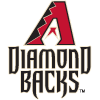 Christian Walker, 1B, Diamondbacks: Given that Walker slumped to a .696 OPS and hit just 10 homers last season, it was all too easy to write him off for much of this year. Through July 31, he was hitting .200/.306/.437, good for a 104 wRC+. That line hid some pretty respectable peripherals, however, as he struck out just 19.6 percent of the time while barreling 13.5 percent of his batted balls, with a .187 BABIP ruining his results despite those strong process numbers. Sure enough, that process has eventually led to better results. His BABIP through 20 games in August sits at .309, helping him hit .315/.381/.630 despite strikeout and barrel numbers that moved only slightly in the right direction. In a sense, Walker barely counts as a riser, since he's basically been hitting like this all year, but he earns a spot here as a reminder of that fact.
Christian Walker, 1B, Diamondbacks: Given that Walker slumped to a .696 OPS and hit just 10 homers last season, it was all too easy to write him off for much of this year. Through July 31, he was hitting .200/.306/.437, good for a 104 wRC+. That line hid some pretty respectable peripherals, however, as he struck out just 19.6 percent of the time while barreling 13.5 percent of his batted balls, with a .187 BABIP ruining his results despite those strong process numbers. Sure enough, that process has eventually led to better results. His BABIP through 20 games in August sits at .309, helping him hit .315/.381/.630 despite strikeout and barrel numbers that moved only slightly in the right direction. In a sense, Walker barely counts as a riser, since he's basically been hitting like this all year, but he earns a spot here as a reminder of that fact.
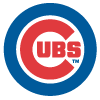 Justin Steele, SP, Cubs: From his debut last season through the All-Star break of this year, Steele looked like a capable major-league pitcher but not one whom fantasy players should get all that excited about, as his mediocre 4.20 ERA came with a similarly forgettable 22.7 percent strikeout rate and 10.5 percent walk rate. Since the break, though, it looks as though he might become something more than that. He's cruised to a 0.86 ERA in six starts, backing up that figure with an excellent set of peripherals, including a 31.5 percent strikeout rate, 6.9 percent walk rate and 50.6 percent ground-ball rate. The run of good form comes as he's turned to his slider (his best pitch) 31.0 percent of the time, well above the 22.6 percent usage the pitch had seen up to that point. Considering his mediocre previous track record, I doubt Steele will continue looking like an ace, but he's doing everything he can to jump from a streamer to someone you're happy to carry on your roster until the end of the season.
Justin Steele, SP, Cubs: From his debut last season through the All-Star break of this year, Steele looked like a capable major-league pitcher but not one whom fantasy players should get all that excited about, as his mediocre 4.20 ERA came with a similarly forgettable 22.7 percent strikeout rate and 10.5 percent walk rate. Since the break, though, it looks as though he might become something more than that. He's cruised to a 0.86 ERA in six starts, backing up that figure with an excellent set of peripherals, including a 31.5 percent strikeout rate, 6.9 percent walk rate and 50.6 percent ground-ball rate. The run of good form comes as he's turned to his slider (his best pitch) 31.0 percent of the time, well above the 22.6 percent usage the pitch had seen up to that point. Considering his mediocre previous track record, I doubt Steele will continue looking like an ace, but he's doing everything he can to jump from a streamer to someone you're happy to carry on your roster until the end of the season.
 Brady Singer, P, Royals: Singer was an interesting late-round option in draft season, as his 4.91 ERA last season came with much better ERA estimators thanks to strikeout and walk rates that were only slightly sub-par and an above-average 49.9 percent ground-ball rate. The Royals evidently didn't see it that way, as Singer opened the year in the bullpen and didn't make his first big-league start of the year until May 17 following a brief demotion to stretch out in the minors. He entered the break with a respectable 4.02 ERA, but his numbers in six starts thus far in the second half are considerably more impressive. He's struck out 30.0 percent of the batters he's faced while walking just 7.3 percent, helping him to a 1.88 ERA and 0.97 WHIP. He now owns a 25.6 percent strikeout rate and a 6.5 percent walk rate on the year, numbers that sit within a point of the marks registered by Shane Bieber and Zac Gallen. Singer very much looks the part of a first-round pick coming into his own in his age-25 season.
Brady Singer, P, Royals: Singer was an interesting late-round option in draft season, as his 4.91 ERA last season came with much better ERA estimators thanks to strikeout and walk rates that were only slightly sub-par and an above-average 49.9 percent ground-ball rate. The Royals evidently didn't see it that way, as Singer opened the year in the bullpen and didn't make his first big-league start of the year until May 17 following a brief demotion to stretch out in the minors. He entered the break with a respectable 4.02 ERA, but his numbers in six starts thus far in the second half are considerably more impressive. He's struck out 30.0 percent of the batters he's faced while walking just 7.3 percent, helping him to a 1.88 ERA and 0.97 WHIP. He now owns a 25.6 percent strikeout rate and a 6.5 percent walk rate on the year, numbers that sit within a point of the marks registered by Shane Bieber and Zac Gallen. Singer very much looks the part of a first-round pick coming into his own in his age-25 season.
FALLERS
 Mike Clevinger, SP, Padres: Has Clevinger's long list of recent injuries taken its toll? His performance over his last three starts certainly suggests so. He owns a 5.79 ERA, 1.79 WHIP and 7:9 K:BB over that stretch, numbers that look even worse when considering his last two outings came against the Nationals and Marlins. Elbow troubles ended his 2020 season prematurely, and while he returned during the playoffs, he threw just one more frame before making the problem worse. He underwent Tommy John surgery that November, which should have given him plenty of time to be ready by Opening Day this year, but his body had other plans, as a sprained knee sidelined him until early May, and he hit the injured list again less than a month later with a triceps strain. Toss in the fact that he's now 31 years old in addition to all those injuries, and it would hardly be a surprise if he's not the pitcher he once was. His 92.9 mph average fastball velocity over his last three outings, down from 93.9 earlier this year and 95.5 mph at his peak in 2019, backs that idea up.
Mike Clevinger, SP, Padres: Has Clevinger's long list of recent injuries taken its toll? His performance over his last three starts certainly suggests so. He owns a 5.79 ERA, 1.79 WHIP and 7:9 K:BB over that stretch, numbers that look even worse when considering his last two outings came against the Nationals and Marlins. Elbow troubles ended his 2020 season prematurely, and while he returned during the playoffs, he threw just one more frame before making the problem worse. He underwent Tommy John surgery that November, which should have given him plenty of time to be ready by Opening Day this year, but his body had other plans, as a sprained knee sidelined him until early May, and he hit the injured list again less than a month later with a triceps strain. Toss in the fact that he's now 31 years old in addition to all those injuries, and it would hardly be a surprise if he's not the pitcher he once was. His 92.9 mph average fastball velocity over his last three outings, down from 93.9 earlier this year and 95.5 mph at his peak in 2019, backs that idea up.
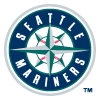 Ty France, 1B/2B, Mariners: France doesn't have much power for a first baseman, but he's typically made enough contact to be quite a useful player nonetheless thanks to his strong contributions to a team's batting average. That was the case through July 25 of this season, as he owned a .312/.382/.485 slash line thanks in large part to his 14.4 percent strikeout rate. His 38.0 percent hard hit rate through that date was only a hair below league average, high enough to at least not get in his way. He tweaked his wrist the next day, however, and things haven't gone at all well for him since then. In 19 games, he's slashed a miserable .158/.230/.211. He's still making plenty of contact, as his 17.2 percent strikeout rate over that stretch is much better than league average, but his 26.6 percent hard hit rate means the hits simply aren't falling. While the wrist issue provides reason for long-term optimism, as he should be able to start hitting the ball harder again once he's fully healthy, it also makes it tougher to believe that a dramatic turnaround is imminent.
Ty France, 1B/2B, Mariners: France doesn't have much power for a first baseman, but he's typically made enough contact to be quite a useful player nonetheless thanks to his strong contributions to a team's batting average. That was the case through July 25 of this season, as he owned a .312/.382/.485 slash line thanks in large part to his 14.4 percent strikeout rate. His 38.0 percent hard hit rate through that date was only a hair below league average, high enough to at least not get in his way. He tweaked his wrist the next day, however, and things haven't gone at all well for him since then. In 19 games, he's slashed a miserable .158/.230/.211. He's still making plenty of contact, as his 17.2 percent strikeout rate over that stretch is much better than league average, but his 26.6 percent hard hit rate means the hits simply aren't falling. While the wrist issue provides reason for long-term optimism, as he should be able to start hitting the ball harder again once he's fully healthy, it also makes it tougher to believe that a dramatic turnaround is imminent.
 Logan Gilbert, SP, Mariners: Gilbert carried a 2.78 ERA into the start of August, but he's hit a wall since then. In four outings this month, he owns a 7.97 ERA, striking out just 13.7 percent of opposing batters while walking 9.5 percent. Only one of those four outings (Aug. 14 at Texas) was a quality start, and he just scraped one out in that contest, giving up three runs in six innings while striking out five and walking four. Interestingly, the main change to his pitch mix over this slump has been that he's thrown fewer sliders (his least effective pitch this season) and more curveballs (his most effective offering). That seems like the sort of thing that would lead to an uptick in performance rather than a downturn, but the curveball hasn't fared well with increased usage, particularly in his first two outings of the month against the Yankees. To be fair to Gilbert, his poor month is still mostly attributable to that pair of outings against one of the league's best lineups, but it's fair to wonder if he's fading down the stretch, as he's already 19 innings past his total from last season.
Logan Gilbert, SP, Mariners: Gilbert carried a 2.78 ERA into the start of August, but he's hit a wall since then. In four outings this month, he owns a 7.97 ERA, striking out just 13.7 percent of opposing batters while walking 9.5 percent. Only one of those four outings (Aug. 14 at Texas) was a quality start, and he just scraped one out in that contest, giving up three runs in six innings while striking out five and walking four. Interestingly, the main change to his pitch mix over this slump has been that he's thrown fewer sliders (his least effective pitch this season) and more curveballs (his most effective offering). That seems like the sort of thing that would lead to an uptick in performance rather than a downturn, but the curveball hasn't fared well with increased usage, particularly in his first two outings of the month against the Yankees. To be fair to Gilbert, his poor month is still mostly attributable to that pair of outings against one of the league's best lineups, but it's fair to wonder if he's fading down the stretch, as he's already 19 innings past his total from last season.
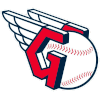 Myles Straw, OF, Guardians: Typically, the question with players who run a lot but don't offer much at the plate is whether they'll hit enough to keep their jobs. In Straw's case, he's having no such issues with playing time, as his 109 starts in center field rank second at the position, but his bat has become so weak that he's nonetheless failed to be much of a fantasy asset despite his 15 steals. Per our Earned Auction Values, he's been a negative asset even in 15-team mixed leagues. His bat was weak enough in the first half, when he hit .212/.305/.266, but he's fallen off a cliff in the second, slashing just .173/.188/.224. He's actually making tons of contact, striking out just 14.6 percent of the time overall, but he's managed just two barrels all year and has a 26.5 percent hard hit rate. When you make such light contact, the hits just aren't going to fall, and while his .240 BABIP on the year is lower than we should expect going forward (especially given his speed), his .230 xBA indicates that he wouldn't be of much use even with better luck.
Myles Straw, OF, Guardians: Typically, the question with players who run a lot but don't offer much at the plate is whether they'll hit enough to keep their jobs. In Straw's case, he's having no such issues with playing time, as his 109 starts in center field rank second at the position, but his bat has become so weak that he's nonetheless failed to be much of a fantasy asset despite his 15 steals. Per our Earned Auction Values, he's been a negative asset even in 15-team mixed leagues. His bat was weak enough in the first half, when he hit .212/.305/.266, but he's fallen off a cliff in the second, slashing just .173/.188/.224. He's actually making tons of contact, striking out just 14.6 percent of the time overall, but he's managed just two barrels all year and has a 26.5 percent hard hit rate. When you make such light contact, the hits just aren't going to fall, and while his .240 BABIP on the year is lower than we should expect going forward (especially given his speed), his .230 xBA indicates that he wouldn't be of much use even with better luck.





















